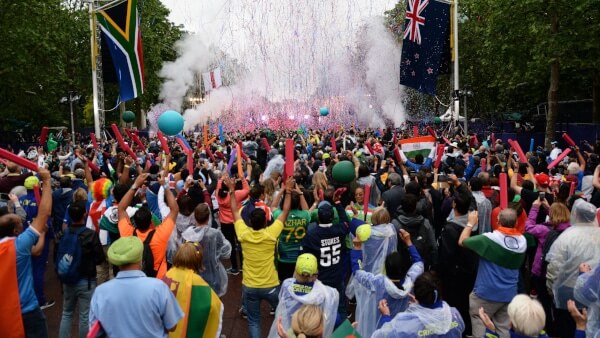As the Cricket World Cup returns to England, the birthplace of cricket and the host nation of the first three ODI World Cups, it’s scarcely believable that the 2019 tournament marks only the 12th edition of the tournament. The game has changed so much in even just the last decade, that the earlier generations may as well have been playing a different sport altogether. As the current tournament rolls on, we look back at how and where it all first began.
The first Cricket World Cup was actually held in 1973, being the women’s tournament, which preceded the inaugural men’s tournament in 1975. These tournaments came just a few short years after the first-ever match of ODI cricket in 1971. As the only nation with the resources to pull off a tournament of this scale, England hosted each of the 1975, 1979 and 1983 tournaments, known as the Prudential Cups based on the eponymous tournament sponsor. This undeniable advantage over the course of nearly a decade makes it all the more staggering a statistic that England have never lifted the trophy.
The first Cricket World Cup was actually held in 1973, being the women’s tournament, which preceded the inaugural men’s tournament in 1975.
1975
In 1975, players wore whites, and matches were played exclusively during the day, with a red ball and 60 overs per innings. Notably, South Africa were banned from the tournament due to apartheid, so a composite ‘East Africa’ team formed by players from Kenya, Uganda, Tanzania and Zambia were the only African representatives. It was such a low-key tournament from a commercial perspective that the organisers merely “hoped TV and sponsorship fees would cover all the expenses”.
The Country Cricket Board, the precursor to the ECB, was so concerned that it arranged a four-Test series against Australia later that year, specifically to mitigate its losses. The tournament nevertheless generated a £200,000 profit, thanks mainly to Prudential’s £100,000 sponsorship. Only £75,000 of this went to the ICC, with the balance split between tournament participants (7.5% each), the hosts England (10%) and the eventual champions, West Indies (£4,000).

1977 – 1992
1977 saw the advent of World Series Cricket, and with that came coloured clothing, white balls, night matches and multiple cameras. In addition to revolutionising the game itself, Kerry Packer’s innovation shook up the competitive dynamics of cricket broadcasting, which up until then had typically been monopolised by traditional broadcasters. Although it was not until the 1992 World Cup that the ICC finally adopted many of Packer’s initiatives, including coloured clothing, night matches and fielding restrictions, the World Cup nevertheless had finally become a major global sporting event. 1992 also saw South Africa’s first entry in the tournament following the end of apartheid.

1996 -1999
The 1996 World Cup was held in India, Pakistan and Sri Lanka and was a step-change towards England losing its vice-like grip on the cricketing world. Much is made today of the influence India has through its all-consuming dominance of the global cricket market, but power is not won only to be easily ceded – and England learned this lesson the hard way. Ahead of the 1996 tournament, England, convinced it was all but promised hosting rights, guaranteed Associate participants £60,000. But England was out of touch with reality: India, Sri Lanka and Pakistan offered £100,000 each, and were subsequently awarded the rights. It was a no-brainer: the TV rights were sold for a then-record $14 million, and Sky Sports bought the UK rights for £7.5 million, a 650% increase from four years ago. The tournament profits for the hosts this time: £50 million.
2003 – present
By 2003, the World Cup had expanded to 14 teams (up from 8 in its inaugural edition) and was very much established as the trophy in the ICC’s cricketing calendar. This went up to 16 in the 2007 World Cup, but, in a cause for concern, has since been whittled back to the current format of 10 teams.
In 1975, the tournament generated a £200,000 profit. By the 1996 Cricket World Cup, the tournament profits for the hosts had reached £50 million.
It is cruelly ironic that even though the game is richer than it has ever been, this year’s World Cup field is the smallest since 1992. Despite electric moments for Associate nations such as Ireland and the Netherlands over major countries in the last decade of international competition, the World Cup of today features no Associates.
Yet, when the likes of Sachin Tendulkar go unheard – with the Indian legend having repeatedly called for more teams to be included in the ICC’s flagship event – cricket’s smaller nations are on a hiding to nothing.





